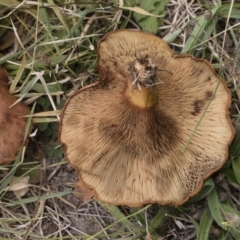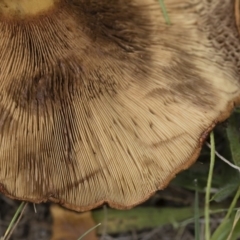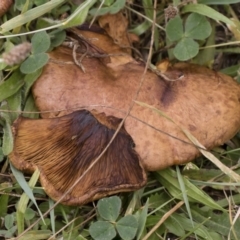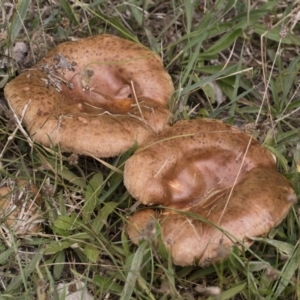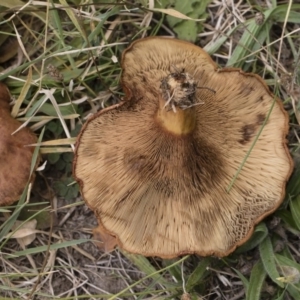Brown roll-rim at Illilanga & Baroona
Identification history
| Paxillus involutus | 27 Mar 2019 | Heino1 | ||
| Paxillus involutus | 26 Mar 2019 | KenT | ||
| Unidentified | 26 Mar 2019 | Illilanga |
Identify this sighting
Please Login or Register to identify this sighting.
User's notes
Private property. No public access without permission. Growing near and within a White Poplar (Populus alba) grove of trees.
3 comments
Illilanga
wrote:
27 Mar 2019
Thanks for the ID. Can this fungi affect stock such as horses, donkeys and alpacas (presuming they have a nibble)? Should we remove it as a noxious species. If so, what are our best options, if any? This area is being revegetated as a native wetland sanctuary but the exotic trees will remain until a time when the other native species are large enough to provide habitat (~10-15 years).
Heino1
wrote:
27 Mar 2019
I don’t know what effect this fungus would have on livestock. Clearly, removal of the mushrooms would remove the potential for any animals eating them – but you’d need to keep checking to see if any new mushrooms have popped up. I don’t think you’d be able to remove the bulk of the fungus itself. What you see above ground are the ephemeral fruiting bodies, their functions being dispersal of spores. The bulk of the fungus consists of a network of fine threads in the soil. Furthermore this species forms a symbiotic association with exotic trees and that thread network penetrates the roots of those trees. While the trees are there the fungus would still be present and capable of producing those visible mushrooms.
KenT
wrote:
28 Mar 2019
It isn't possible at present to know what effect if any animal feeding on your fungus would have on the animal. The toxin(s) responsible isn't known see http://www.toxinology.com/poisonous_mushrooms/mushrooms_diagnosis1-ns.htm If you go back through the literature over the past 200 yrs you will see there is some disagreement regarding toxicity to humans, but definitely fatal in some poisonings. It seems that Paxillus involutus as it has been known over most of those 200 yrs is a species complex with some species remaining to be split off. This could partially account for reported differences in toxicity. This species hasn't been studied in Australia so it isn't known if across Australia it is a single species resulting from a single initial introduction with nursery stock or if it has come in multiple times from many countries. So it impossible to guess how poisonous the ones found in Australia are, but safest to assume they are poisonous to humans. There doesn't seem to be any information that shows mammals feeding on this species group. If your poplars are old then it is possible the fungus has been there since the trees were planted although there would have been a few years before the fungal fruit bodies appeared. If the property has been stocked since the poplars have been planted and no unexplained illness or deaths in the stock then it may be there is no concern. If there is a concern then the only practical solutions seem to either remove the trees or fence the area off- this would have to include the root zone.
Please Login or Register to comment.
Nearby sightings
Location information
- Coordinates 149.157980-35.785292
- Altitude 786.0m
- Maps Illilanga & Baroona
- Places Michelago, NSW
Sighting information
- 16 - 100 Abundance
- 24 Mar 2019 11:03 AM Recorded on
- Illilanga Recorded by
-
Collections
Illilanga Completed
Species information
- Paxillus involutus Scientific name
- Brown roll-rim Common name
- Not Sensitive
- Exotic
- Non-Invasive
- 429.5m to 863m Recorded at altitude
- Machine learning
Record quality
- Images or audio
- More than one media file
- Confirmed by an expert moderator
- Nearby sighting(s) of same species
- GPS evidence of location
- Description
- Additional attributes

